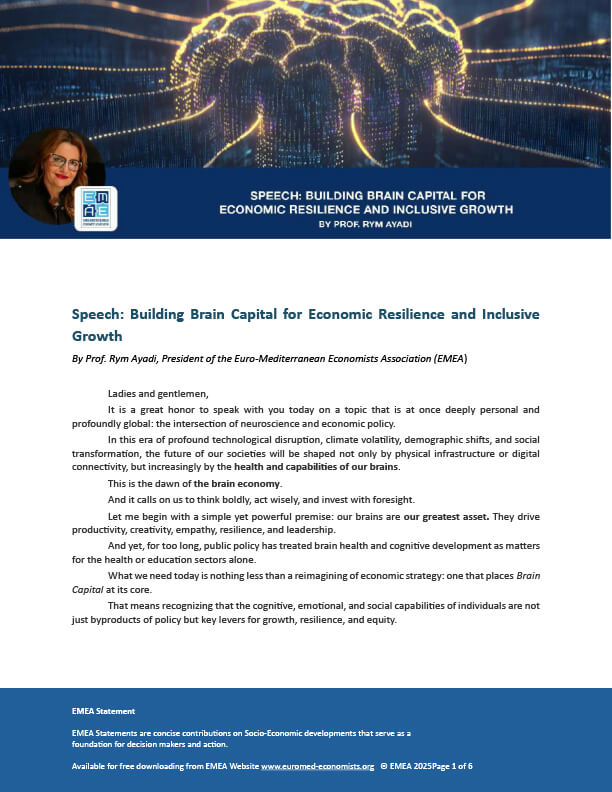Unless urgent action is taken now, we are on course to create a biodiversity catastrophe within the next 30 years.
That’s one of the gloomy forecasts made by scientists, conservationists and indigenous leaders from around the world, who have recently been questioned by The Guardian newspaper as to what would be “the consequences of inaction on biodiversity by the middle of the century.”
Experts from every continent warned that not taking action by the middle of the century – just at the point when the world population is predicted to peak – could result in specie extinctions, the rapid spread of invasive species (often bringing new diseases), plastic pollution on a vast scale, crashing fish populations and disappearing forests.
According to The International Union for Conservation of Nature’s (IUCN) Red List of Threatened Species, more than a quarter of all plant and animal species are at risk of extinction.
Alexandre Antonelli, director of science at the Royal Botanic Gardens at Kew in the UK said it filled him with pain to watch the never-ending destruction of natural ecosystems in his home country of Brazil.
“From the Amazonian and Atlantic rainforests to the Cerrado shrublands, trees that are home to myriad insects and orchids, soils teeming with fungi and micro-organisms, and land that jaguars and toucans inhabited for millennia are being brutally lost,” he said. The drivers of biodiversity loss were clear for all to see and whilst science provided powerful solutions, “time is running out.”
To counteract the potential loss, Antonelli said that humanity needed to work to restore nature across the planet, adopt more environmentally friendly farming practices, reduce meat consumption, stop the spread of invasive species and dramatically cut the use of fossil fuels.
Creating desert conditions
Sandra Myrna Díaz, an Argentinian biologist who co-chaired the 2019 Intergovernmental Science-Policy Platform on Biodiversity and Ecosystem Services (IPBES) assessment of the state of the planet, said the proportion of nature in direct contact with the wider public would continue to shrink. Over the past 50 years, the most significant driver of biodiversity decline – by far – had been land-use change.
“If these trends continue in the next decades, soil health is likely to deteriorate further due to erosion by intensive annual cropping, [with] pollution by biocides and salinisation,” she said.
Researchers had estimated that over the past 10,000 years, humanity had cleared about a third of all forests for farming. This had destroyed key ecosystems such as tropical rainforests, which were amongst the most biodiverse on the planet.
Regarding the threat to unique arid landscapes, Emma Archer, a professor of geography and environmental science at the University of Pretoria, said South Africa’s Karoo landscape had altered, due to changing farming systems, increased investments in mining and renewable energy, as well as climate change.
“Unless we better understand and address how these different factors are interacting to impact this precious biodiverse landscape – including one of the most biodiverse desert ecosystems in the world – the outcomes will be severe,” she said.
In respect of land-use change, Cristiane Julião, from the Brazilian Amazon’s Indigenous Pankararu people warned that this was often interlinked with other drivers of biodiversity loss. “If we do not take the necessary actions to conserve biodiversity, the world’s future and that of our people can be described in one word: desert,” she said.
Invasive species on the march
Aníbal Pauchard, professor of forest science at the University of Concepción, helped lead an expert UN assessment on invasive species, the spread of which has been attributed to human travel and trade. Around 3,500 such species had been recorded globally.
Pauchard said that if no action was taken, by 2050 Chile “will have lost its ecological uniqueness and will be less suitable for nature and people.” About a quarter of Chile’s biodiversity was not found anywhere else on Earth, due to natural barriers including the Atacama desert, the Andes and the Pacific Ocean, she pointed out.
“Overabundant invasive alien species … will have replaced the unique local ecosystems, causing some native species, especially those that are endemic to Chile, to go extinct,” she said.
Hanno Seebens, from the Senckenberg Biodiversity and Climate Research Centre in Frankfurt, said if nothing changes, the number of invasive species in Europe could double by 2050. A warming climate and spread of invasive species could see disease-carrying animals reach new ecosystems in Europe. “Continuing warming due to climate change will allow disease-transmitting species such as the Tiger mosquito … to spread across Europe,” Seebens warned.
Prof Peter Stoett, who co-chaired the UN assessment on invasive species, said that without increased biosecurity measures in North America, invasive species would threaten human health, native biodiversity and the economy. “This entire ecosystem will change without intensification of control efforts.”
‘Global cooperation is crucial’
Researchers have estimated that humans would need 1.7 planet Earths to sustain our current rate of consumption. To dedicate more resources to the green-energy transition, mining firms would need to find new extraction methods, in order to minimise damage to nature.
Unai Pascual, from the Basque Centre for Climate Change, said that more than two-thirds of the projected population of 10 billion people would live in cities by 2050. Population growth and urbanisation would put further strain on demand for resources if not managed properly, which could have dire risks for the health of ecosystems – with a growing share of the population becoming disconnected from nature, both physically and psychologically.
“If we do not act effectively now to protect and enhance urban biodiversity,” Pascual added, “we will likely see more severe human suffering, especially by the world’s most vulnerable urban inhabitants,” he said.
Dr Jean-Marc Fromentin, from the marine protection body UMR Marbec, warned that, following decades of overfishing of key species for human consumption, the collapse of fisheries was a possibility – especially given the risks from global heating. “Without decisive action, the ocean’s productivity and, consequently, the world fish catch is set to decline sharply due to seawater warming and acidification caused by climate change,” he said.
Surangel Whipps Jr, president of the Pacific country of Palau and co-chair of the High-Level Panel for a Sustainable Ocean Economy, said the world could learn from his country’s customs. Palau’s bul tradition, a sustainable practice of pausing fishing to replenish stocks, had provided nourishment for generations. But now, global cooperation was crucial. “Sustainability measures within our exclusive economic zone alone can’t guarantee the world’s ability to provide food, air and water,” he said.
“We cannot recycle our way out of this mess”
Experts also warned that the build-up of plastics, chemicals, pesticides and fertilisers in natural ecosystems threatened biodiversity and required immediate action.
Dr Marcus Eriksen, co-founder of the 5 Gyres Institute, which works to reduce plastic pollution, said action was vital to avoid overwhelming key ecosystems with more waste.
“When we published our global estimate of microplastic in the world’s oceans, averaging 170tn particles, we also discovered an alarming and increasing trend. This number would easily quadruple by 2050, likely exceeding the capacity of Earth systems to deal with that level of pollution,” he said.
This underscored the importance of having a strong UN global treaty on plastic pollution, he emphasised adding: “We cannot recycle our way out of this mess.”
Federico Maggi from the University of Sydney, said about three million tonnes of pesticides were used every year on the world’s crops and fields to control unwanted plants, fungi and bacteria. Of the amount applied to fields, 82% was biodegraded to simpler molecules “currently not fully characterised for their environmental and biodiversity effects.”
James Dalton, director of the IUCN global water programme, said the impact of human pollution was also being seen underground, in the world’s groundwater. “We use [water] and often don’t put it back where it came from, meaning we don’t recharge the groundwater with any excess water we took out and didn’t use,” he said.
“The water we use, we pollute, and some of those pollutants go back into the ground. This then slowly infiltrates into our future water supply – sometimes permanently,” he added, calling for far better regulation of groundwater use and much stricter controls and monitoring of pollutants. Also, some areas of the planet should remain free from land development, to protect underground water resources.
Major shift in marine ecosystems function
Henry Häkkinen, a post-doctoral fellow at ZSL’s Institute of Zoology, said that European seabirds already facing problems from invasive predators, entanglement with fishing gear and avian influenza, were now additionally threatened by warming seas. This was causing a major shift in how marine ecosystems functioned. “Many seabirds rely on these cold-water species, especially during the breeding season and, if their food disappears, so too will the seabirds,” he said.
Juan Lucas Restrepo, director general of Alliance of Bioversity International, warned that the climate crisis could present a major challenge to future food supplies in south Asia. Rising temperatures, prolonged droughts and extreme climate events were already modifying the natural habitat where many crop species grew, which had negative impacts on yields and food security.
“This is a huge threat to environmental, social and economic sustainability in the region. If this trend continues, it will limit food availability and increase food prices, resulting in rising undernourishment,” he said.
Susan Chomba, director of vital landscapes for Africa at the World Resources Institute (WRI), said the world wouldn’t be able to solve either the hunger or climate crises without Africa.
We currently faced a perfect storm, she suggested, with almost 60% of the continent’s arable land being degraded and over 280 million Africans facing hunger. Climate-driven droughts and cyclones had wiped out any development gains made over recent decades. Staying on the same path would hurt countries’ economies and decimate the Congo basin, one of the continent’s biggest carbon sinks.
But she said hope lay in the 33 million smallholder farmers across the continent, who produced over 70% of the food for Africa and for export. They had made considerable progress in restoring degraded land into productive farms that not only grew healthy foods rich in biodiversity, but also acted as major carbon sinks. “Throughout Africa, we’re seeing hope for a new path,” she concluded.





